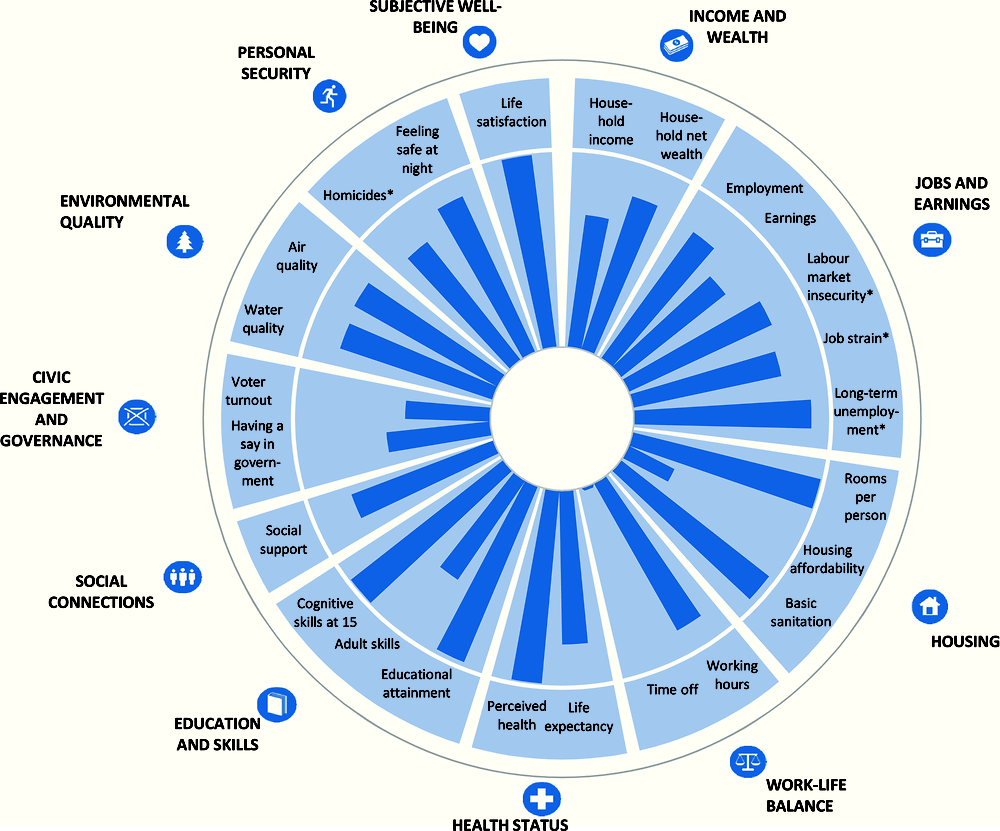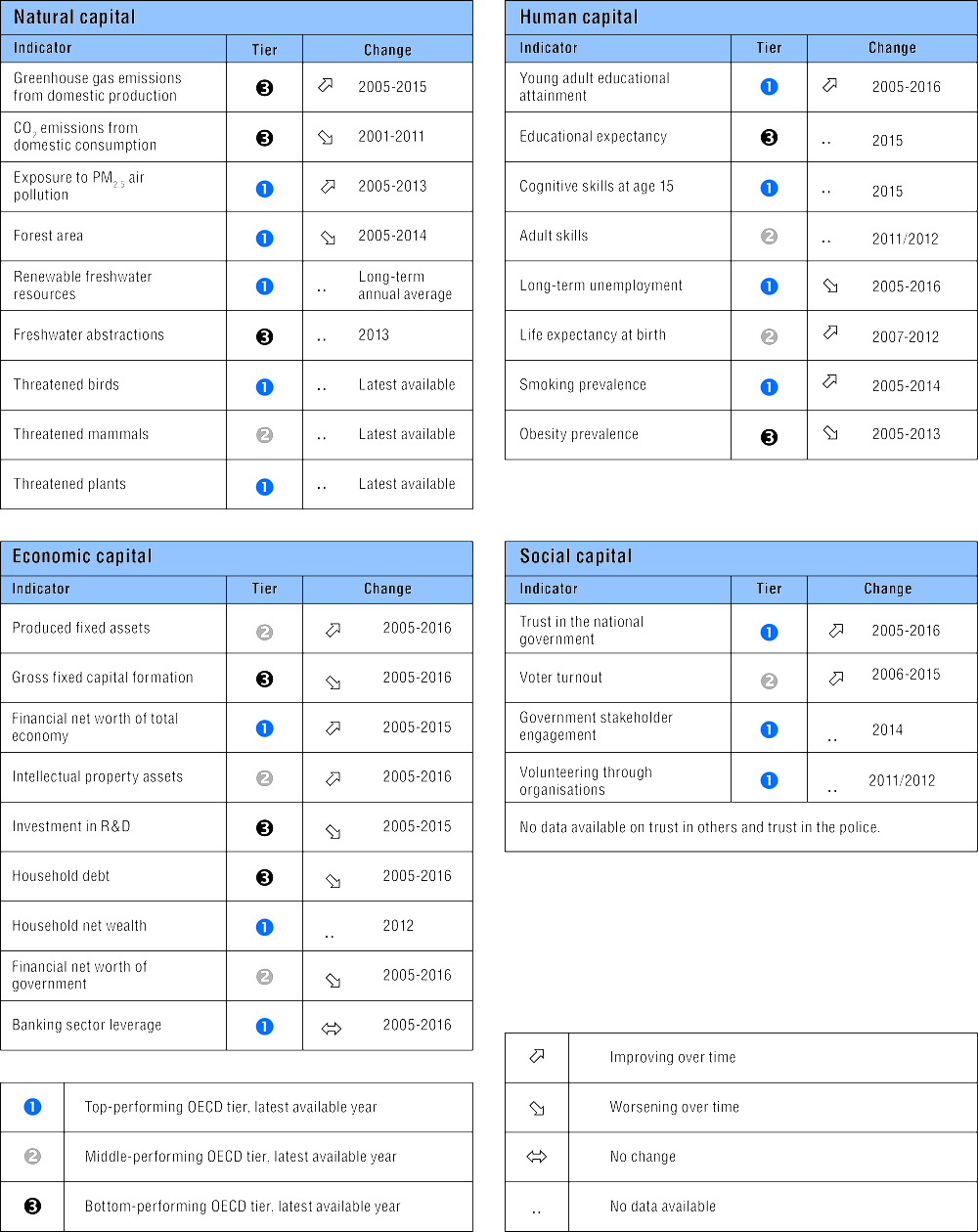How's life in Canada?
Canada typically performs above the OECD average level across most of the different well-being indicators shown below. It falls within the top tier of OECD countries on household net wealth, the employment rate is high (73% in 2016), the long-term unemployment rate is low (0.8% in 2016) and fewer than 4% of employees usually work 50 hours or more per week, less than a third of the OECD average rate. However, full-time employees on average reported having less time off (i.e. time spent on leisure and personal care) than those in most other OECD countries. Housing conditions are generally good, but housing affordability stood below the OECD average in 2016. The average Canadian enjoys relatively good air and water quality, and both feelings of security and life satisfaction are among the highest in the OECD area. A high share of Canadians also report good levels of perceived health, although these data are not directly comparable with those of the other OECD countries, due to a difference in the reporting scale.


